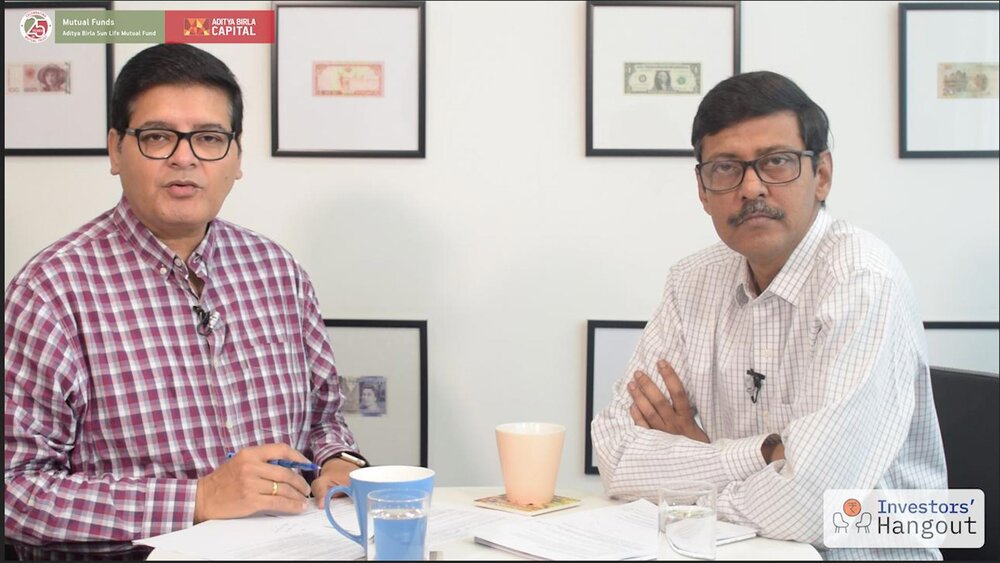
Value Research Stock Advisor has just released a new stock recommendation. You can click here to learn more about this premium service, and get immediate access to the live recommendations, plus new ones as soon as they are issued.
Sarthak (38) and Priya (37) have a four-year-old son. They live in their own house, along with Sarthak's mother (59), who is financially dependent on them. Their combined monthly take-home salary is Rs 1.05 lakh, while their monthly expenditure is Rs 50,000. They have accumulated around Rs 26 lakh, which includes their investments in stocks, mutual funds, fixed deposits, Public Provident Fund (PPF) and the Employees' Provident Fund (EPF).
Here is a financial plan for the couple to help them meet their various goals.
Emergency fund
Sarthak and Priya have Rs 6.85 lakh in a combination of fixed deposits and two debt funds. An emergency fund should be equal to at least six months of expenses. The couple already has more than double of what's required, so they may consider reducing their emergency corpus to Rs 5 lakh, which would be equivalent to their expenses for 10 months. The extra amount can be invested in equity funds over a couple of months.
Further, instead of a traditional bank fixed deposit, they should opt for a sweep-in deposit, which offers higher liquidity. An ultra-short duration or a short-duration fund, along with a sweep-in deposit, would be sufficient for them.
Action: Consider reducing your emergency corpus. Invest the extra amount in equity funds over a couple of months.
Health insurance
The entire family is completely dependent on the health cover provided by Sarthak's employer. An employer-provided health cover is valid as long as the job lasts. It is not available during the transition period if you decide to change your organisation. Hence, Sarthak and Priya should buy a family-floater health cover of Rs 5 lakh, covering themselves and their son. It would cost them around Rs 14,000-15,000 per annum. They should also buy a health cover for Sarthak's mother.
Action: Buy your own health insurance and a health cover for Sarthak's mother, too.
Life insurance
Sarthak and Priya have invested in some endowment policies, which serve the dual purpose of investments and life insurance. One should stay away from such hybrid products as these products are quite expensive and yield poor returns. The couple should consider surrendering these policies and investing the proceeds in equity mutual funds for better returns.
Also, Sarthak should buy a pure term plan of at least Rs 1 crore, as Priya's monthly salary of Rs 30,000 alone may be insufficient to take care of their expenses in Sarthak's absence. A pure term plan of Rs 1 crore would cost Sarthak around Rs 13,000 per annum. Further, Priya may also consider buying a life cover of Rs 25-50 lakh to support Sarthak financially in her absence.
Action: Surrender your endowment policies. Buy pure term-insurance plans.
Child's higher education
Sarthak thinks that a corpus of Rs 70 lakh in today's terms would be sufficient to take care of his son's higher education in 15 years. He can accumulate the required inflation-adjusted corpus by investing Rs 22,000 monthly in equities, assuming a 12 per cent return, provided he increases the contribution by 10 per cent every year. For this, he can invest in two good multi-cap funds.
Action: Do SIPs of Rs 22,000 in two top-rated multi-cap funds.
Retirement
Sarthak and Priya would need a retirement corpus of around Rs 4.41 crore to maintain the same lifestyle during their post-retirement years. They collectively hold Rs 13.80 lakh in their provident-fund accounts. This includes Rs 3 lakh invested in the PPF. Assuming that their mandatory monthly PF contributions increase by 10 per cent yearly with the annual appraisal, this would alone fetch them Rs 3.88 crore at the time of retirement.
Earmarking another Rs 2.5 lakh from their current equity investments of Rs 5.35 lakh would take care of the deficit, assuming a modest 12 per cent return. Also, it would be prudent to invest a minimum of Rs 500 yearly in the PPF to keep the account active. On maturity of the PPF account, invest the proceeds in equity funds. This should help them earn better returns.
Action: Earmark Rs 2.5 lakh from your current equity investments, along with your EPF money, for your retirement.
Other goals
Sarthak wants to send his mother on a foreign trip in the next three years. He estimates the cost to be Rs 4 lakh. Putting Rs 11,000 monthly in an ultra-short-duration fund would help him achieve this goal.
Further, he wants to spend Rs 1 lakh on his niece's wedding, which is expected within five years, and another Rs 3 lakh within six-seven years on the thread ceremonies of his nephew and son. Since these goals are more than five years away, he can invest in an aggressive hybrid fund, which has a significant equity allocation. For this, an SIP of Rs 5,500 would be sufficient. However, he should increase the contribution every year by 10 per cent.
Action: Invest Rs 11,000 in an ultra-short-duration fund and another Rs 5,500 in an aggressive hybrid fund.
Portfolio
Sarthak has invested around Rs 1.5 lakh in stocks. You should invest directly in equity only if you have the required skills and the time to do the necessary research. Otherwise, you should invest in mutual funds.
Sarthak's equity mutual fund portfolio is around Rs 3.85 lakh, which is spread across seven mutual fund schemes of different categories. Although all the funds selected by him are good, he should consolidate the portfolio to four or five schemes only. Having two multi caps for his retirement and son's higher education money, a tax-saving fund and an aggressive hybrid fund for his goals due within five to seven years would be sufficient.
The couple would be left with a monthly surplus of around Rs 12,000-14,000 after making the required investments. They can invest it in multi-cap funds to create long-term wealth. Alternatively, they can use it for their son's wedding or any other goal.
Action: Consolidate your equity mutual fund portfolio to four or five schemes.
Keep in mind
- The emergency fund should be equal to at least six months of expenses.
- Even if you have employer-provided health insurance, still buy your own health cover.
- Keep insurance and investment separate. Go for a term plan for life insurance.
- Four to five funds are sufficient for diversification.
- Invest in stocks directly only if you can do the necessary research.









